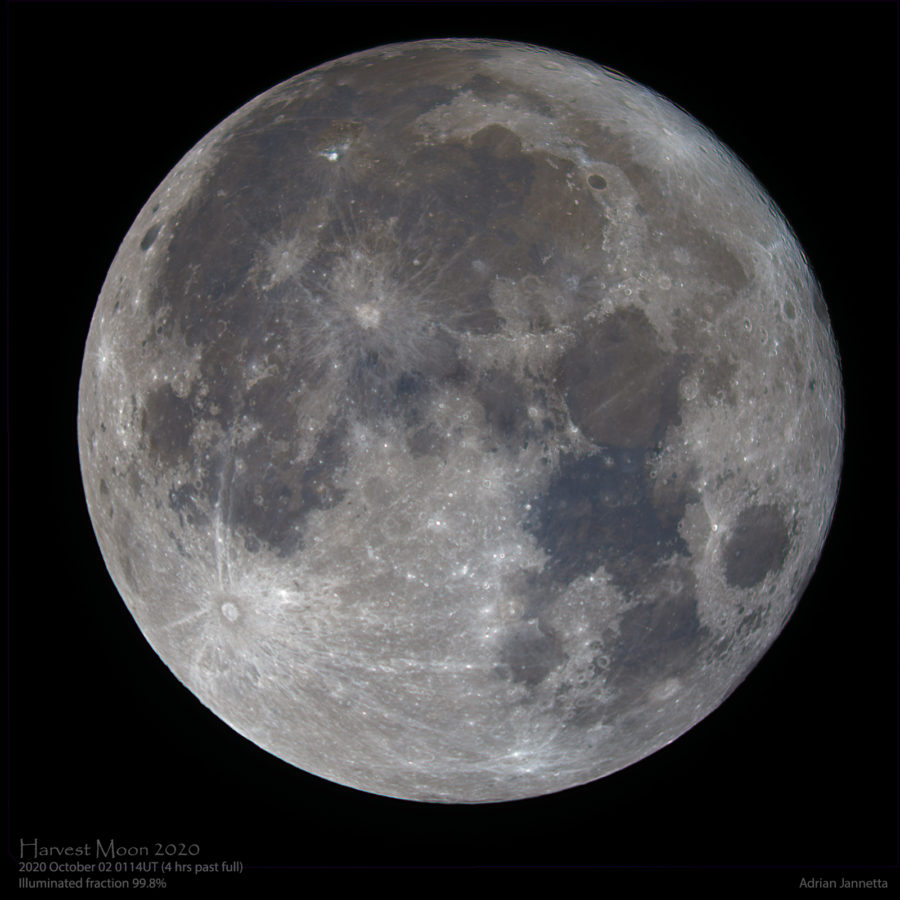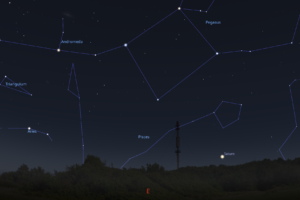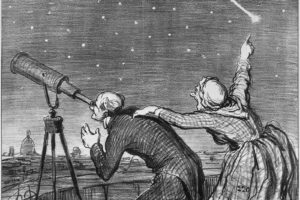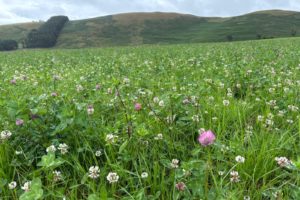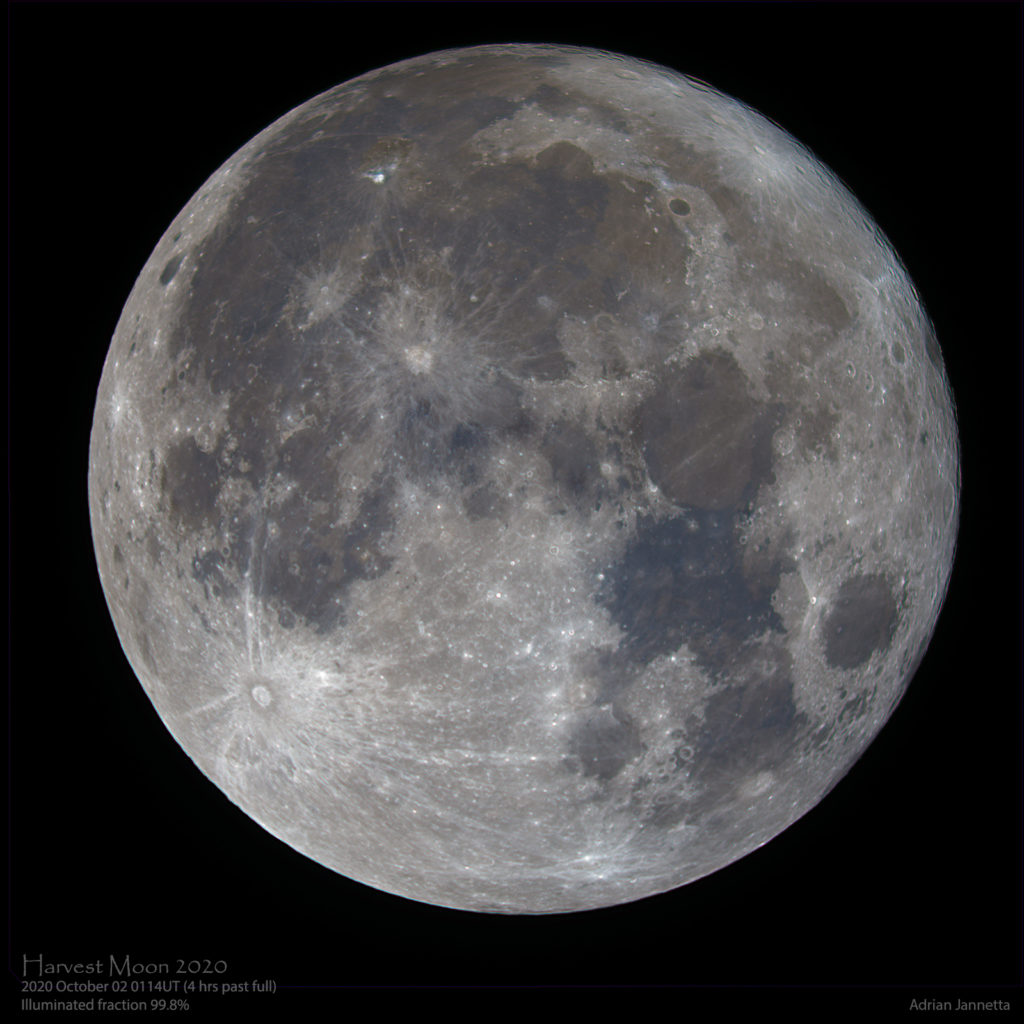
As the nights shorten and the autumn cold begins to grip the landscape, one of the most famous lunar spectacles rises into the night sky: the Harvest Moon. That warm yellow ball, hanging low and aglow over the horizon, has delighted farmers and poets and sky-gazers for centuries. But why is this particular full moon different? And why is it called the Harvest Moon?
What is the Harvest Moon?
The “Harvest Moon” is not another type of moon or any rare celestial phenomenon. Astronomically speaking, it is simply the full moon that occurs nearest the autumnal equinox, usually September 22nd or September 23rd (north of the equator). In any year, the Harvest Moon can occur any time between early September till early October.
In 2025 the Harvest Moon occurs on October 7th. In 2026, it will fall on September 26th.
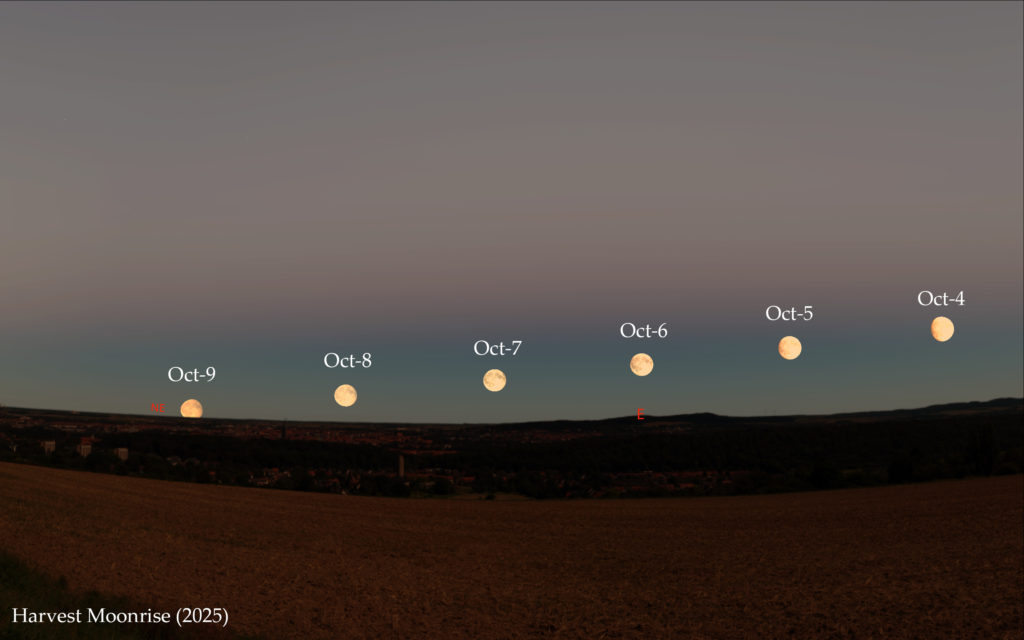
What is particularly distinctive is the time and the form of the moonrise on the nights around this full moon. For several consecutive nights we have bright moonlight just after sunset, almost like having multiple “full moons.” Before electric lighting, a bright Moon right after sunset in early autumn was more than just beautiful – it was practically useful. Farmers harvesting crops late into the evening benefited from the additional light, especially during a critical time when daylight hours were rapidly decreasing. Hence the name: Harvest Moon.
Causes of the Harvest Moon
On average, the moon rises around 52 minutes later each successive day.
The maths behind this is simple enough: the moon makes a full orbit of the Earth every 27.3 days, which means the moon travels roughly 13 degrees across the sky every day. The Earth spins at 15 degrees per hour (making a full turn in 24 hours). Thirteen-fifteenths of an hour is roughly 52 minutes.
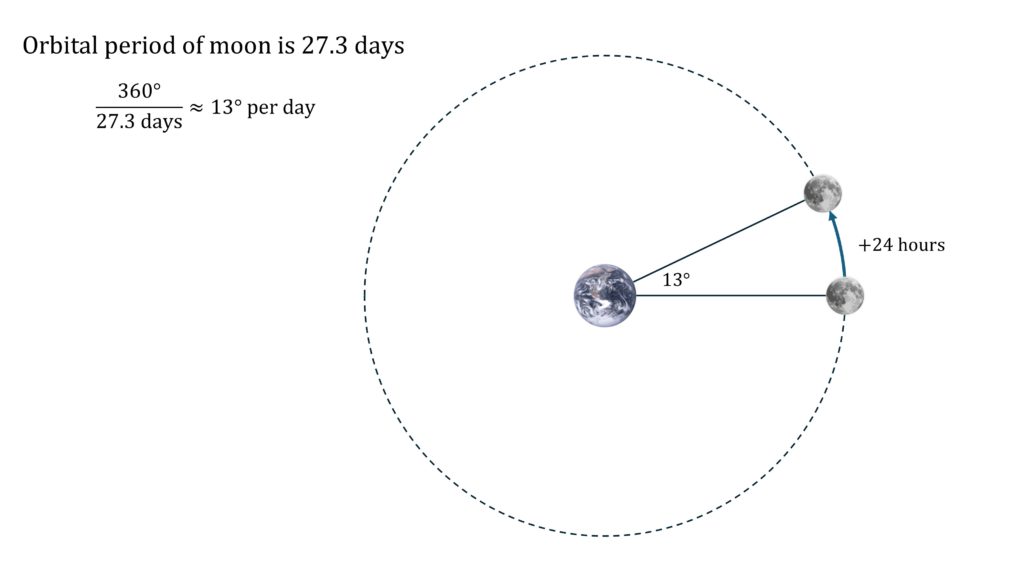
The 52 minute delay in moonrise varies considerably throughout the year because the of the Earth’s axial tilt of 23 degrees. This tilt gives rise to the seasons we experience each year. As the Earth orbits around the Sun, the Sun appears to follow a path through the sky called the ecliptic. The moon also follows this path because its orbit around Earth is nearly aligned with the equator.
At the autumnal equinox, the ecliptic (the apparent path of the Sun and Moon across the sky) is at a shallow angle with the horizon just after sunset. Thus, when the Moon is full or nearly full and rises at about this season of the year, it appears to hug the horizon rising just slightly later each night.
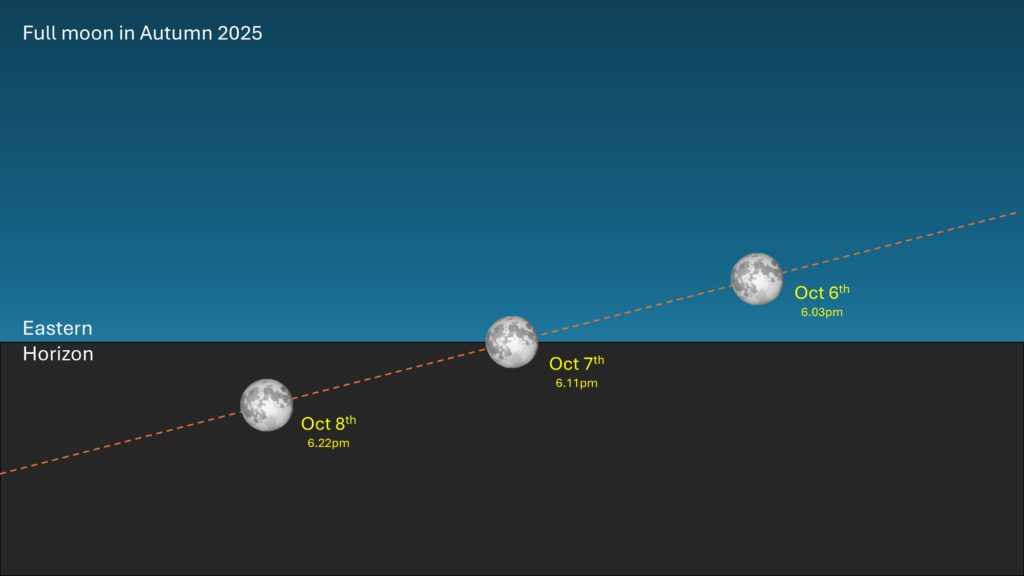
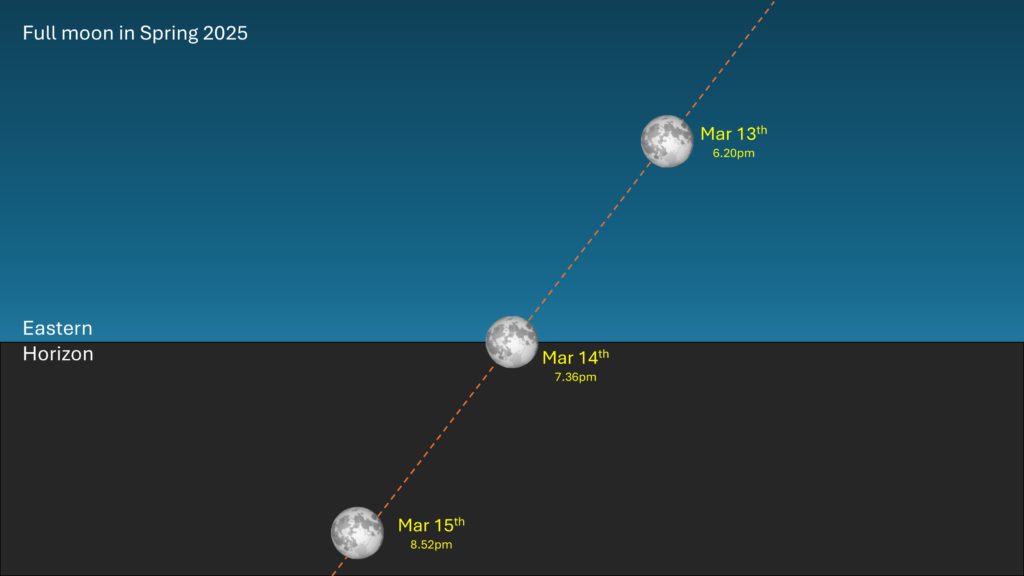
In high northern latitudes like the UK, the time of moonrise on successive evenings around full moon is reduced to around 10 minutes.
This effect is strongest for temperate and higher latitudes of the Northern Hemisphere. In the Southern Hemisphere, there is a similar effect near the March equinox but it is not as seasonally significant.
One of the more typical qualities of the Harvest Moon is its color. As the Moon is low on the horizon, it will often take on a deep gold or orange hue. That is not unique to the Harvest Moon, but the conditions—rising just following sunset when the skies are often misty—make the color effect especially striking.
Appearance of the Harvest Moon
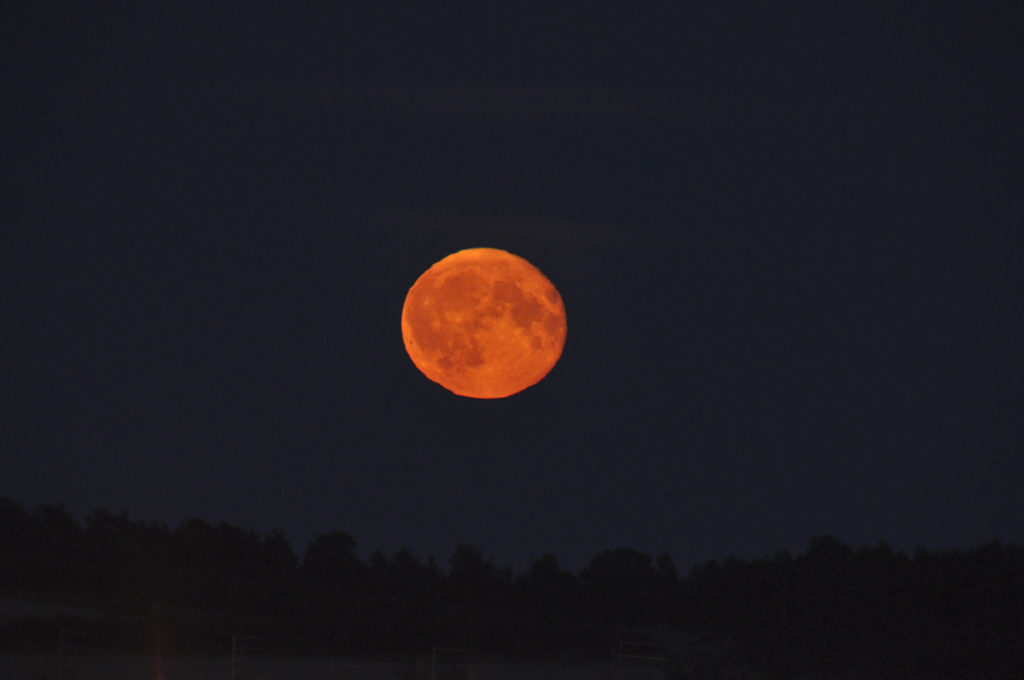
One of the more typical qualities of the Harvest Moon is its colour. As the Moon is low on the horizon, it will often take on a deep gold or orange hue. That is not unique to the Harvest Moon, but the conditions – rising just following sunset when the skies are often hazy – make the colour effect especially striking.
This is due to Rayleigh scattering, the same phenomenon that accounts for the red hues of sunset. Because moonlight is passed through more of the planet’s atmosphere, shorter blue wavelengths are stripped away and the wider red and orange colours are the dominant hues.
Other moons
The Harvest Moon is a traditional name for a seasonal full moon.
Here’s a month-by-month summary of the traditional full moon names, primarily based on North American and European folklore, especially from Algonquin, Colonial American, and other Native American traditions. These names often reflect natural events, weather patterns, and seasonal activities.
| Month | Traditional Full Moon Name | Meaning / Significance | Other Names |
|---|---|---|---|
| January | Wolf Moon | Named for wolves howling in the cold winter nights. | Ice Moon, Cold Moon |
| February | Snow Moon | Typically the snowiest month of the year. | Hunger Moon, Storm Moon |
| March | Worm Moon | Earthworms begin to reappear as the ground thaws. | Sap Moon, Crow Moon, Crust Moon |
| April | Pink Moon | Named after early-blooming pink wildflowers. | Egg Moon, Sprouting Grass Moon, Fish Moon |
| May | Flower Moon | Reflects the abundance of spring flowers. | Milk Moon, Corn Planting Moon |
| June | Strawberry Moon | Marks the season for harvesting strawberries. | Rose Moon, Hot Moon |
| July | Buck Moon | Time when buck deer begin growing new antlers. | Thunder Moon, Hay Moon |
| August | Sturgeon Moon | Named for plentiful sturgeon fish in lakes. | Green Corn Moon, Red Moon |
| September | Harvest Moon | Closest full moon to the autumnal equinox; aids late harvesting. | Corn Moon (if not closest to the equinox) |
| October | Hunter’s Moon | Ideal time to hunt and store food for winter. | Blood Moon, Sanguine Moon |
| November | Beaver Moon | Time when beavers build their dams and hunters set traps. | Frost Moon |
| December | Cold Moon | Reflects the cold, long nights of early winter. | Long Night Moon, Oak Moon |
| Varies | Blue Moon | Second full moon in a calendar month or third of four in a season – a rare occurrence. | — |
You may also know the term Blood Moon. This refers to those rare nights where the full moon transforms to a deep orange-red colour during total lunar eclipses.
I was inspired to write about the Harvest Moon because the topic came up during a discussion with guests on an astronomy evening at Ingram. The title of this article is from a popular song from the 1900s. You can listen to a 1931 version by Ruth Etting here.
Wishing you clear skies!
Adrian

